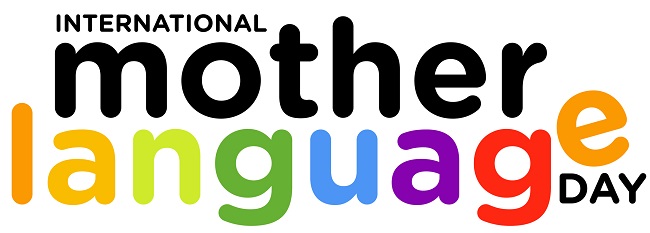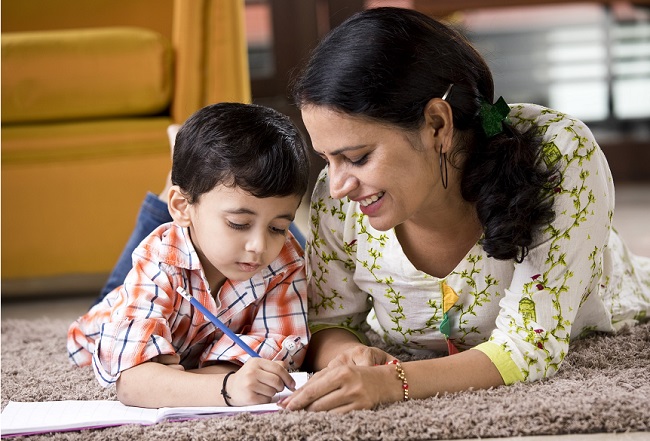Nov 02, 2025
Nov 02, 2025
Introduction

The International Mother Language Day is celebrated on February 21, but I got reminder this year a month earlier. Which was in form of a news item about the Canadian Government agreeing to settle class action claim “seeking reparations for the loss of language and culture brought on by Indian residential schools, for $2.8 billion.”

My mind was filled with thoughts and feelings for the loss of the Indian tribes. Suddenly a thought occurred, wait this could be fate of my mother tongue too, if we fail to safeguard and make efforts to preserve it. According to UN, “Every two weeks a language disappears taking with it an entire cultural and intellectual heritage. At least 43% of the estimated 6000 languages spoken in the world are endangered.” The telltale signs were noticed by Guru Nanak Dev Ji (1469 -1539), when he observed this trait in Punjabis over 500 years back, as reflected in these words:

“Ghar ghar mian sabhanaa(n) jeeaa(n) bolee avar tumaaree. 6.” — (SGGS, Pg. No. 1191)
Translation: In each and every home, everyone addresses using the term “Mian” for greetings (as used by the rulers); even your speech has changed, O people. ||6||
That was Guru Ji’s take on the language of Indian subcontinent then, but now it has been replaced by Hindi and English instead. The push to impose one national language over the regional languages can become the cause of their death knell.
Brief History of International Mother Language Day
February 21 is observed as the International Mother Language Day since 2020, based on the UNESCO declaration in 1999. It has been observed throughout the world since 21 February 2000. The declaration came up in tribute to the Language Movement by Bangladeshis (East Pakistan then). When Indian subcontinent was given independence in 1947, it was divided into India and Pakistan. The division was based on religion and the state of Pakistan had two geographically separate parts called East and West Pakistan. These two parts were very different from each other in the sense of culture, food, ideology, and language.
In 1948, the Government of Pakistan declared Urdu to be the sole national language of Pakistan, even though Bengali or Bangla was spoken by the majority of people combining the populations of East Pakistan and West Pakistan. The East Pakistan people protested and refused to accept Urdu, as their mother language was Bangla. They demanded Bangla to be at least one of the national languages, in addition to Urdu. The rulers came down heavily on the protesters with protest rallies being outlawed and curfews imposed. On 21 February 1952, police opened fire on rallies killing many, plus injuring hundreds. This was a rare incident in history, where people had sacrificed their lives for their mother tongue.
Since then, Bangladeshis celebrate the International Mother Language Day as one of their tragic days. It was again in 1998, by the efforts of Vancouver based expatriates from Bangladesh that UN took the step of recognizing it as International Mother Language Day.
The situation in India was slightly different in the sense that although Hindi was declared as the national language with English as the link language, the regional languages were given a place. Although there was a strong opposition to this three-language formula (English, Hindi, Regional) but still the turmoil was not so devastating as there was some accommodation to the regional interests. Still with the thrust on Hindi and its overwhelming presence in media as TV, movies, music, and radio resulted in more and more people switching to it over regional languages. The effect is more pronounced when the children’s mother tongue is not the regional language where they are studying. Thus, they are missing that mother language connection in learning as the void is being filled by the national language. Another way the children are losing their connection to their mother tongue is when their parents have moved to other parts of the country because of their job or other economic opportunities.
History of Birth of the Land of International Mother Language Day
With the creation of state of Pakistan in 1947 based on religion in the East Pakistan ethic concerns grew, over the right to use the Bengali language, and a desire for local political control and self-rule. Without going into the details of the history let us jump to events around its birth. The Awami League from the East won a substantial victory in Pakistan’s elections in December 1970. But General Yahya Khan was not ready to yield power to Awami League, also other parties in the West Pakistan were also opposed to it. With over 15 million refugees in India from across the eastern border the situation was already very tense and acute. The months of fruitless negotiations culminated in the declaration of martial law and military being called to control the explosive situation in East Pakistan on March 25, 1971. The military resorted to repressive measures worsening the situation. The opposition leaders went underground, and a guerrilla movement called Mukti Bahini started. Then on December 03, 1971, Pakistan Air Force launched a pre-emptive strike on Indian Air Force bases, which became the official start of Indo-Pakistani War. The bitter war was being fought mainly on the western front, while Bengali refugees from East continued pour over to India. Then India opened the eastern front and it’s army crossed into East Pakistan. The war was short and intense, being fought on both the Eastern and Western fronts was finally over in 13 days. Finally on December 16, 1971, General Niazi, Chief Martial Law Administrator of East Pakistan signed the instrument of surrender in Dacca to Lt. General Jagjit Singh Arora of India’s Eastern command. He along 93,000 Pakistani troops surrendered to the Indian and Mukti Bahini forces.
Pride of Mother Tongue
The newly liberated country called Bangladesh adopted the poem “Amar Sonar Bangla” by Nobel Laurate Gurdev Rabindranath Tagore of India, as the national anthem of the new country. The purpose for this information is to share an anecdote from his life on the importance of mother tongue. Balraj Sahni, who later became a famous Indian actor was working in Shanti Niketan and had gone to meet Tagore to invite him to a function called Annual Hindi Sammelan. After the introductions, Tagore asked Sahni what he was doing besides teaching. Sahni said he writes stories in Hindi. Tagore’s advice: “I write in Bengali, which is a provincial language; yet not only the people of Hindustan but people all over the world read what I write.” When Sahni got up to leave Tagore’s parting words from Sahni’s pen were: “I had barely reached the door, when Gurudev spoke words which troubled my heart for many years. But one day, suddenly, I realized that these words had much truth in them.” After that Sahni adopted Punjabi as his literary language. I am sharing this to evoke how dear the mother tongue was to such a gifted, and talented poet and an artist. Additionally, it should be noted that his Bengali song “Jan gan mun” is national song of India, whose national language is Hindi. A unique achievement of a poet to have two countries national anthems from his poems. The words of advice that Tagore gave to Sahni needs to be heard by all those who consider their own mother tongue as inferior (see Reference 4).
Conclusion
The worldwide migration and internet has changed the way we have live and how we communicate. So, the preservation of languages is going to be challenging and will become a bigger and more immediate challenge if the speakers of that language are smaller in numbers. But the threat exists for all the languages that cannot make the top cut in terms of number of speakers and interest in that language.
According to the UNESCO Report those who implemented a sustainable mother-tongue-based bilingual education program reports not just improvement in their linguistic capabilities in their mother language skills, but better results in Mathematics, and general overall improvements as well. Besides their performance improvements, their confidence levels also soared compared to monolingual students. The speaker of multiple languages learn early to favor one set of rules while ignoring another, that trains mind early on to focus and discriminate, to ignore what is irrelevant and discover arbitrariness of words. The Broca’s area is the “speech center” of the brain. When children learn a second language as toddlers, they use same part of Broca’s area for both. However, learning a language later in life takes more brainwork and recruits other parts of brain. Recent studies (Reference 6) show that children raised bilingually develop a specific type of cognitive benefit during infancy, and that bilingualism offers some protection against symptoms of Alzheimer's dementia in old people. If the children do not learn the mother tongue, then they will miss out in bonding and connection to their older family members who may be monolingual speaking only the mother tongue. A gulf will divide the generations which may be physically sitting right next to each other, but an ocean of void separates them. Let us try to prevent this catastrophe by making efforts to save the mother tongue.
References:
Images (c) istock.com
18-Feb-2023
More by : Bhupinder Singh

|
I found your article very interesting and knowledgeable. I was not aware of international mother language day. Other I learned was the Urdu being imposed on east Pakistan, now Bangladesh, against wishes of local residents. Another thing I learned was loss of so many local languages being lost due to our ignorance. Minorities need to wake up and realize what is going on with their not only language but their culture as well is lost. |